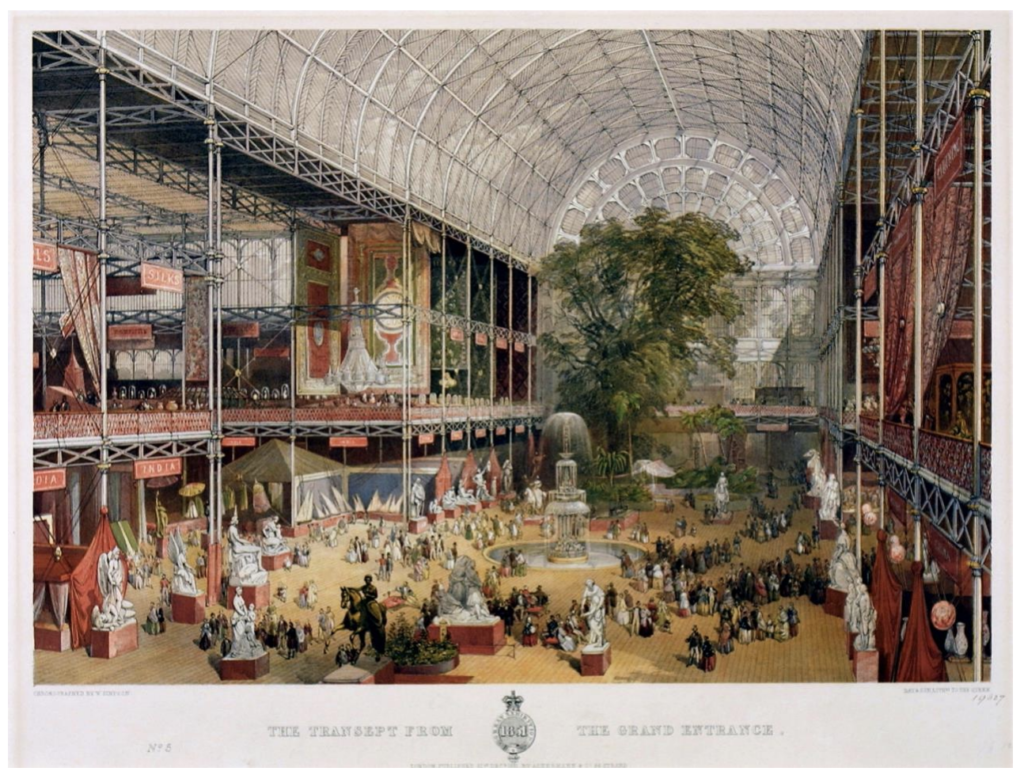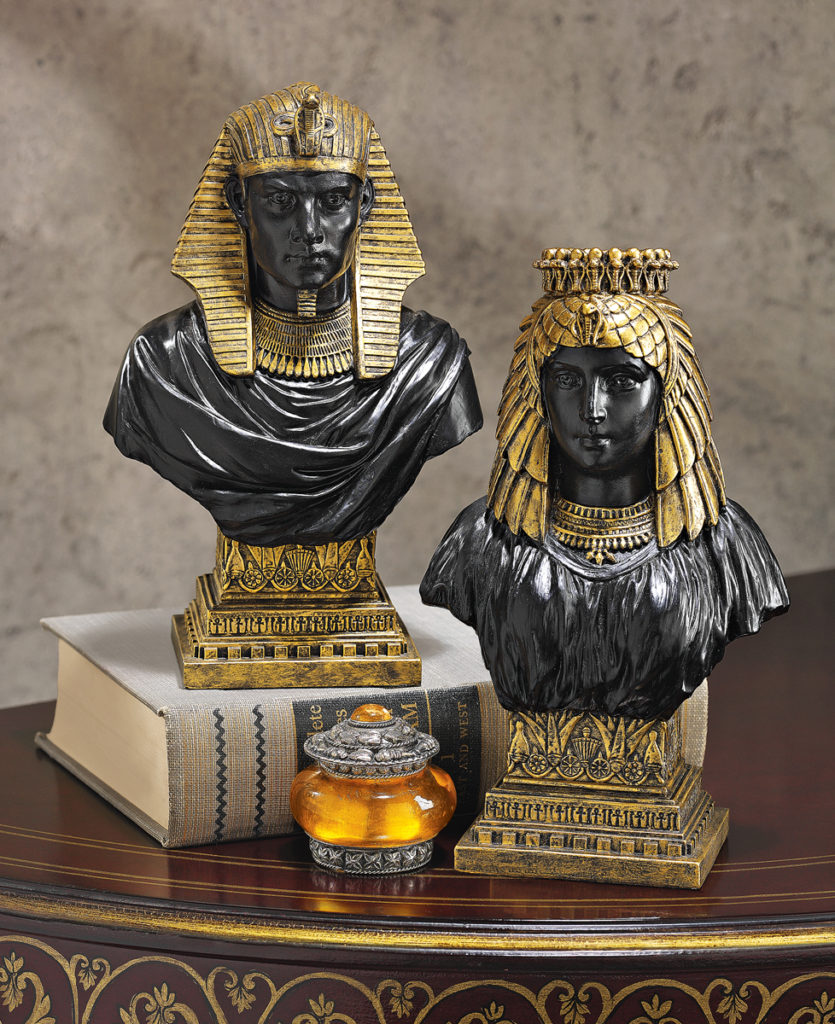The desire to embellish our homes with art was born in an ornate palace of crystal…
Design Toscano is proud to offer many of the objects that first captured the imagination of the world in the lovely Crystal Palace in the park.

Deemed the eighth wonder of the world by some, to the Victorians of the day the “Crystal Palace” was surely like a dream. The world’s largest iron goliath, boasting three tiers and over a million feet of shining, crystal-like glass, this impressive sight stood at the center of London’s Great Exhibition of 1851. Billed by Queen Victoria and Prince Albert as a display of “the Works of Industry of All Nations,” twenty-one acres were roofed over in an award-winning building by architect Joseph Paxton.

With rising Industrial Age standards of living and increasing time to pursue art and culture, over six million people from around the world flocked to explore the glories of the Crystal Palace. Visitors must have felt as if they were in a giant greenhouse as they encountered tropical plants, a glass fountain and fully-grown elm trees. They could spend the entire day inside, enjoying refreshment courts, the first public “comfort” rooms, filtered water, the music of twenty-four pipe organs and splendid vistas from the upper galleries. Boasting over 13,000 exhibits and 100,000 objects blending art and science, the grandiose and innovative building showcased a myriad of new innovations.
Ornamental furniture designs, similar to our Thornwood Manor Victorian Dressing Mirror (AF7245), manufactured by hand with the help of modern tools, attracted great attention. The streamlined Jacquard loom allowed tapestries such as our Tree of Life Wall Tapestry (PC3450) to be created more easily. Collections of fine, gilded swords, suits of armor – like our Italian Armor Sculpture with Halberd (CL3423) – and weaponry of modern manufacture were also displayed.
The Palace’s Centre Transept housed a circus and exotic animal trophies from all parts of the world, including Africa and Asia. Breathtakingly huge statues of the Egyptian pharaoh Ramses II, copied from the temple of Abu Simbel, held center stage. You can recreate this Egyptian décor look on a more manageable scale with our Egyptian King Rameses II and Queen Nefertari Bust Set (WU975546).
Though Gothic Revival architecture had not yet come into dominance, its influence was everywhere, including the Medieval Court created by Gothic designer A.W.N. Pugin. Design Toscano customers have a wide selection of Medieval & Gothic décor to decorate their own castles. Taking inspiration from both medieval times and the ironwork of the Crystal Palace, our Malbark Castle Gothic Floor Candelabra (FU67244) will be a centerpiece in your home’s grand dining hall or romantic master bedroom.
The Greek Court, designed by Owen Jones, exhibited over 2,000 statues, the largest single collection of sculpture in Britain. A copy of Michelangelo’s monument to Lorenzo de Medici dominated the Italian Court. Find many of Michelangelo’s works of art as well as many more artists in our Indoor Statue gallery.
The Crystal Palace itself was almost outshone by the park in which it stood; Hyde Park was transformed into a veritable landscape of magnificent fountains, the largest of which threw 120,000 gallons of water to a height of 250 feet. Create your own impressive backyard focal point with one of Toscano’s many fountains. The park was further beautified with an unrivaled collection of garden statues, many of which were copies of great works from around the world. Recreate this classic formal garden look with statues such as our Lion of Florence Sentinel Statue & Base (KY971134).
More than anything else, the Great Exhibition ushered in a new age of art and design criticism. The works of great Pre-Raphaelite painters such as Waterhouse and Leighton found phenomenal popularity because the public’s appetite for things of beauty was so whetted.
The extraordinary impact of the Crystal Palace continues to influence the arts and sciences even today: The profits from the event allowed for the foundation of public works such as London’s Albert Hall, the Science Museum, the National History Museum and the Victoria and Albert Museum. Europeans and their cousins “across the pond” still strive to create “a house beautiful” and to imitate the art and architecture first introduced in 1851.




